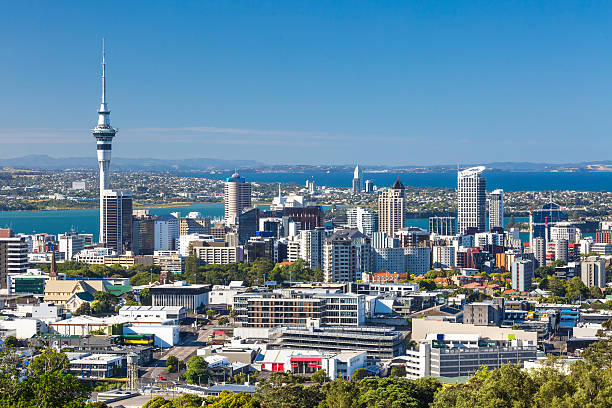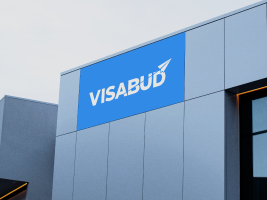Burkina Faso Travel Guide: All you need to know to visit Burkina Faso in 2024
Welcome to Burkina Faso
Burkina Faso Travel Guide
The West African nation of Burkina Faso, which is landlocked, is renowned for its rich cultural diversity, breathtaking scenery, and active marketplaces. However, the country is unsafe for tourists due to recent civil strife. This comprehensive Burkina Faso travel guide includes information on visa regulations, so you can find it there if you plan to visit the nation.
Document checklist for Burkina Faso
Visa (if applicable)
Valid passport
Return or onward ticket
Essential Burkina Faso travel information
Currency – The West African CFA Franc is Burkina Faso’s national currency(XOF). The CFA Franc and the Euro are linked. In XOF, $1 is roughly equal to XOF 618.
Daily budget for one person – Allocate between XOF 20,000 and 30,000 ($36 and $55) per day.
Languages – Mooré and Dioula are spoken in addition to the formal language of French.
Socket type – 50Hz, 220V source power, and C and E.
Time zone – Greenwich Mean Time (GMT).
Top 3 major cities – Bobo-Dioulasso, Koudougou, and Ouagadougou.
The top 3 landmarks/monuments are Keran National Park, Koutammakou, and Lake Burkina Faso.
Visa information for Burkina Faso
You can travel to Burkina Faso and get a visa immediately, depending on your circumstances, or you may have to apply for a tourist visa at the country’s embassy or consulate.
Typical costs and budget for Burkina Faso
Daily spending – Spend roughly XOF 20,000–30,000 (USD 36–55) daily.
Meals – The price of a meal ranges from XOF 1,500 to 2,500 (USD 3 to 5).
Transport – In Burkina Faso, taxis are a popular mode of transit. The taxi ride cost can range from XOF 500 to 2,000 ($1-4), based on the distance.
Hotel – Burkina Faso offers simple guesthouses and hostels with rooms starting at around XOF 10,000 (roughly USD 18) per night.
Transport and best ways to travel around Burkina Faso
Bus: A well-liked mode of transportation in Burkina Faso, particularly for long distances between towns. Routes are run by several private bus firms, with different degrees of safety and luxury. While some vehicles might be equipped with air conditioning, others might need more time to be ready for the elements.
By vehicle: Although it can be costly and time-consuming, renting a car is another choice for getting around Burkina Faso. Burkina Faso’s roads are frequently dangerous and poorly kept, particularly outside the country’s largest towns. Visitors should be mindful of the possibility of robbery and carjacking and take the necessary safety measures. Follow local traffic rules and make sure you have a foreign driving permit.
In Burkina Faso, particularly in urban areas like Ouagadougou and Bobo-Dioulasso, taxis are a typical mode of transit. Taxis can be called on the streets, and the fee is typically agreed upon with the driver before the trip starts.
By motorcycle: In Burkina Faso, motorcycles are a standard mode of transit, particularly in rural regions. Larger towns and cities offer motorbikes for rental, but visitors should be mindful of the possibility of thievery and mishaps.
Burkina Faso needs some perseverance and flexibility to navigate. Visitors should take safety measures and be ready for delays and unforeseen difficulties.
Safety in Burkina Faso
Anyone considering visiting Burkina Faso should prioritize their safety. Although the nation has many amazing sights and experiences, it is also essential to be conscious of security issues and take the necessary measures.
The incidences of crime are significant in Burkina Faso. Therefore, basic safety measures that visitors should take involve refraining from carrying large amounts of cash, avoiding traveling alone at night, and hiding valuables from view.
The danger of terrorism and kidnapping is among the significant worries regarding personal safety in Burkina Faso. Recently, terrorist organizations have become more active, especially in the northern parts of the nation. Therefore, visitors should keep up with the most recent security changes and avoid high-risk locations. Watching the local news and government agencies for security information is also an excellent strategy.
Last but not least, Burkina Faso travelers need to take health precautions. It is crucial to use insect repellent and take anti-malaria medicine because of the high incidence of malaria in the nation. Consuming bottled water and clearing roadside food is also a good idea because it might not be prepared or managed correctly.
Weather in Burkina Faso
The tropical country of Burkina Faso experiences different rainy and arid seasons. The wet season usually lasts from June to October, and the drier season typically lasts from November to May.
Burkina Faso is best visited in the dry season when the climate is more agreeable for outdoor pursuits. Visitors should, nevertheless, dress appropriately for summer temperatures and carry UV protection. In addition, certain roadways may become inaccessible during the rainy season due to flooding, and weather may restrict outdoor pursuits.
Must do and see in Burkina Faso
The bustling metropolis of Ouagadougou, Burkina Faso’s capital, is home to vibrant marketplaces, busy streets, and a monumental, imposing cathedral. You may visit and enjoy this city.
West African indigenous masks, textiles, and other items can be found in this museum’s collection at the National Museum of Burkina Faso. Visit the museum and enjoy.
Ruins of Loropéni – A former iron-working hamlet can be found at this UNESCO World Heritage Site
Sindou Peaks: Burkina Faso’s most breathtaking scenery can be found around these towering rock structures.
Beautiful natural features like woods, lakes, and rivers surround Banfora.
Typical Burkina Faso food
Tô: A typical dish in Burkina Faso, Tô is prepared from maize or sorghum flour combined with water to resemble dough. The combination is then cooked over medium heat and mixed frequently until a viscous, gooey paste develops. Tô is commonly eaten with a sauce composed of meat, seafood, or vegetables.
A typical meal in Burkina Faso is riz gras, composed of rice cooked in a tomato and onion sauce with different veggies and pork. The meal can be served with plantains or yams and is frequently spiced with ginger and garlic.
Another typical meal in many Burkinabe homes is poulet bicyclette, a roasted poultry entrée. Before being flawlessly roasted, the poultry is marinated in a blend of seasonings, garlic, and citrus. It frequently comes with a portion of pilaf or rice.
Vaccine information for Burkina Faso
A yellow fever immunization record is required for entry into Burkina Faso. Six to eight weeks before your trip, make sure you get a current vaccination. Additionally, widespread diseases are Zika and malaria.
The CDC website should always be checked for the most recent information on vaccination regulations and medication suggestions.
Related Articles

5 min read
New Zealand Introduces Key Changes to Post Study Work Visa : What You Should Know
According to the government, this change will provide students with greater flexibility in their academic choices while ensuring they remain eligible to work. For many students, studying abroad is a
Read More
5 min read
The Singapore visa processing time for Indian citizens
Singapore is a small island located in the Malay Peninsula in Southeast Asia. It is one of the most economically developed countries in the world. Singapore is a fantastic place
Read More
5 min read
How Much Does an Australia Trip Cost from India?
If you are planning a trip from India to Australia, you must follow some of the points. that are : Planning Budget Traveling date and time To which place you
Read MoreOne month before the planned journey to Burkina Faso is the earliest date to apply for a visa. It is advised that all visa applications be made fifteen days before departure to give enough time for visa processing.
Indian nationals who wish to visit Burkina Faso for leisure, tourism, or unscheduled trips to friends or family must obtain a tourist visa.
Indian nationals traveling for brief stays, such as conferences or business meetings, should use a business visa.
Yes, the Embassy will stamp the actual passport with the visa. Therefore, the passport must have two blank pages. Additionally, your passport must be current for at least six months after the planned stay.
Typically, it takes two weeks to complete a visa application.
When applying for a passport and while traveling to Burkina Faso, the Burkina Faso government requests a copy of your Yellow Fever immunization record.
